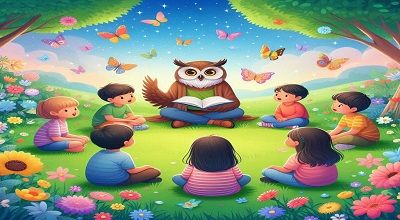Teach Kids When They’re Ready
Teach Kids When They’re Ready. Teaching kids when they’re ready is a fundamental principle of effective education. It recognizes that children develop at their own pace and that learning is most effective when it aligns with their individual readiness and interests. Here are some key points to consider when teaching kids when they’re ready:
Understand Developmental Stages:
- Every child goes through various developmental stages, and these stages can vary from child to child. It’s essential to have a basic understanding of these stages to gauge when a child might be ready for certain types of learning or skills.
Be Patient:
- Patience is crucial when teaching kids. Pushing a child to learn something before they are ready can lead to frustration and resistance. Instead, provide opportunities for learning and be prepared to wait until the child expresses an interest or readiness.
Individualized Learning:
- Tailor your teaching approach to each child’s unique needs, interests, and abilities. Customize the learning experience to accommodate their readiness level.
Observe and Listen:
- Pay close attention to the child’s cues and interests. They will often indicate when they are ready to learn something new. Listen to their questions and engage in meaningful conversations to understand their curiosities and readiness.
Encourage Exploration:
- Provide a rich and stimulating environment that encourages exploration and hands-on learning. When kids have the freedom to explore and experiment, they are more likely to express their readiness to learn.
Foster a Love for Learning:
- Make learning a fun and enjoyable experience. Encourage a love for learning by incorporating play, games, and creativity into the educational process.
Support Independence:
- As children grow and develop, they will become more independent. Encourage them to take the initiative in their learning process and problem-solving. This can boost their confidence and readiness to learn.
Set Realistic Expectations:
- Avoid setting unrealistic expectations for children’s development. Understand that each child progresses at their own pace, and this is entirely normal.
Use Positive Reinforcement:
- Offer praise and positive reinforcement when a child demonstrates readiness and makes an effort to learn. Positive feedback can motivate them to continue exploring and discovering.
Communicate with Care:
- Open and honest communication is vital. Discuss learning goals and expectations with your child, and let them know you’re there to support them in their learning journey.
Be a Role Model:
- Children often learn by observing the behavior of adults and other role models. Show them your own enthusiasm for learning, curiosity, and problem-solving, as this can inspire and encourage their readiness to learn.
Conclusion
Remember that teaching kids when they’re ready is not about rushing or holding back a child’s development; it’s about respecting their individual growth and providing them with the right support and opportunities for learning at their own pace. This approach can lead to a more positive and effective educational experience for children.
